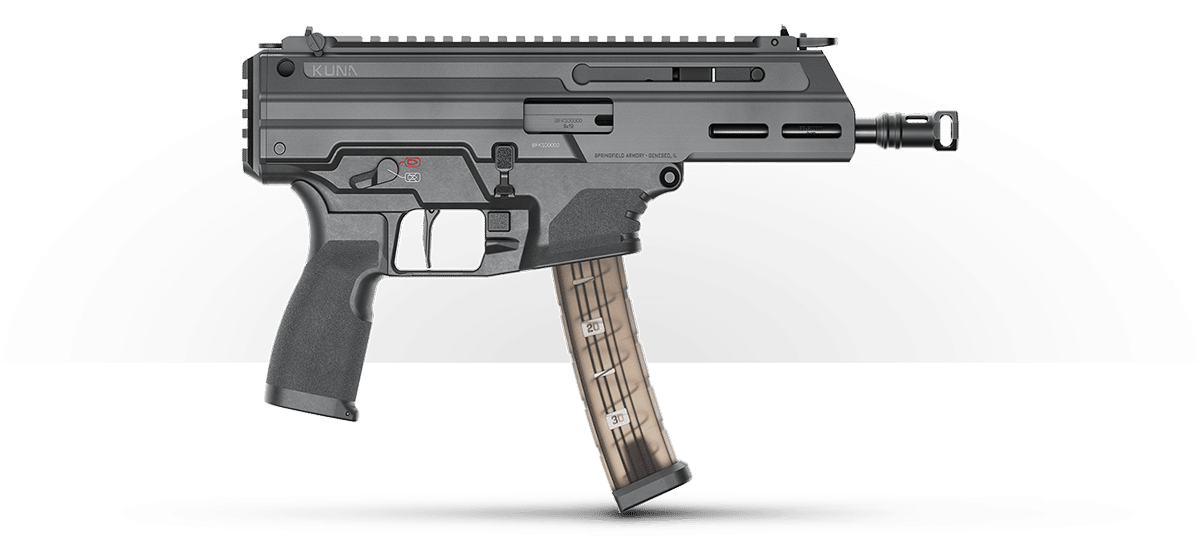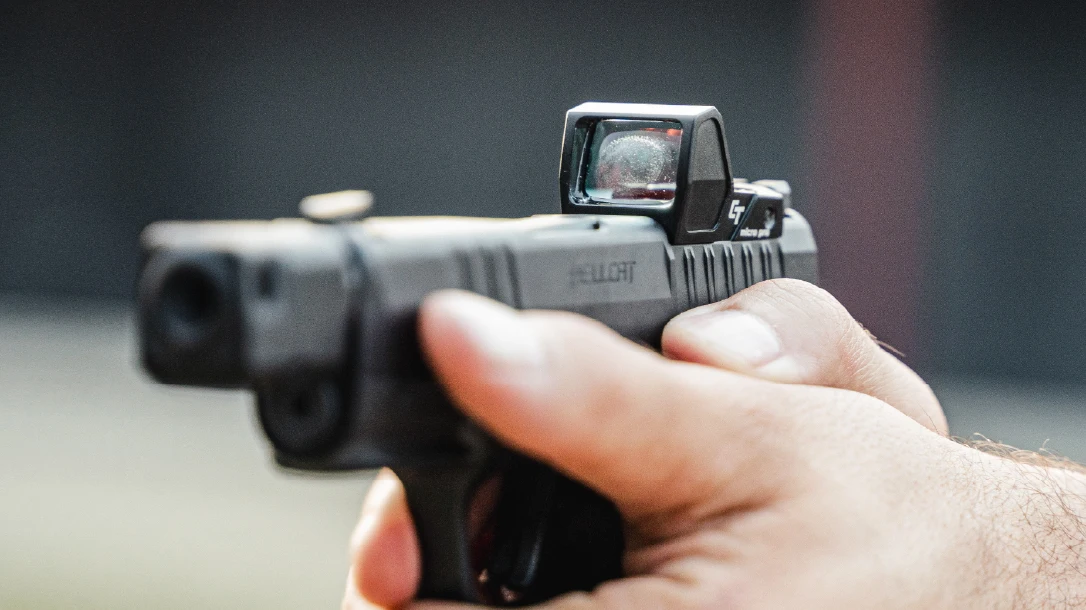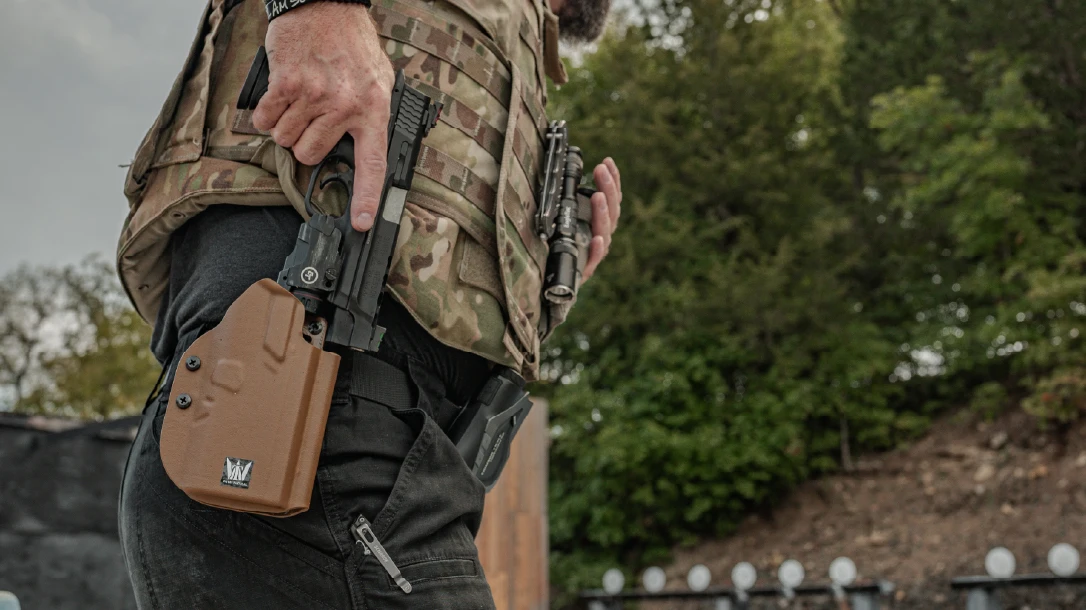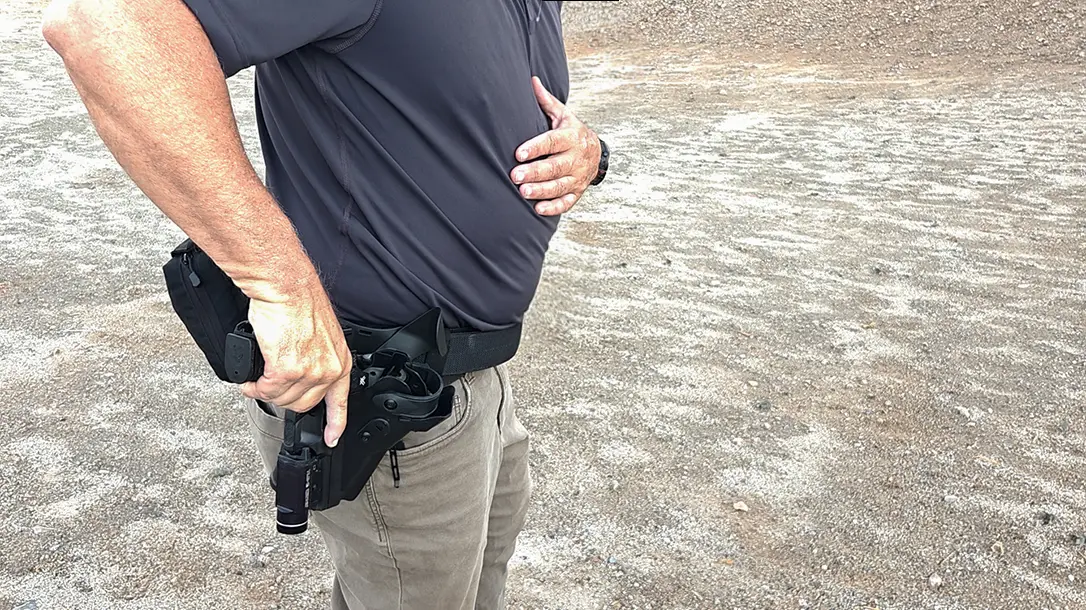Physics of the Roller-Delayed Kuna
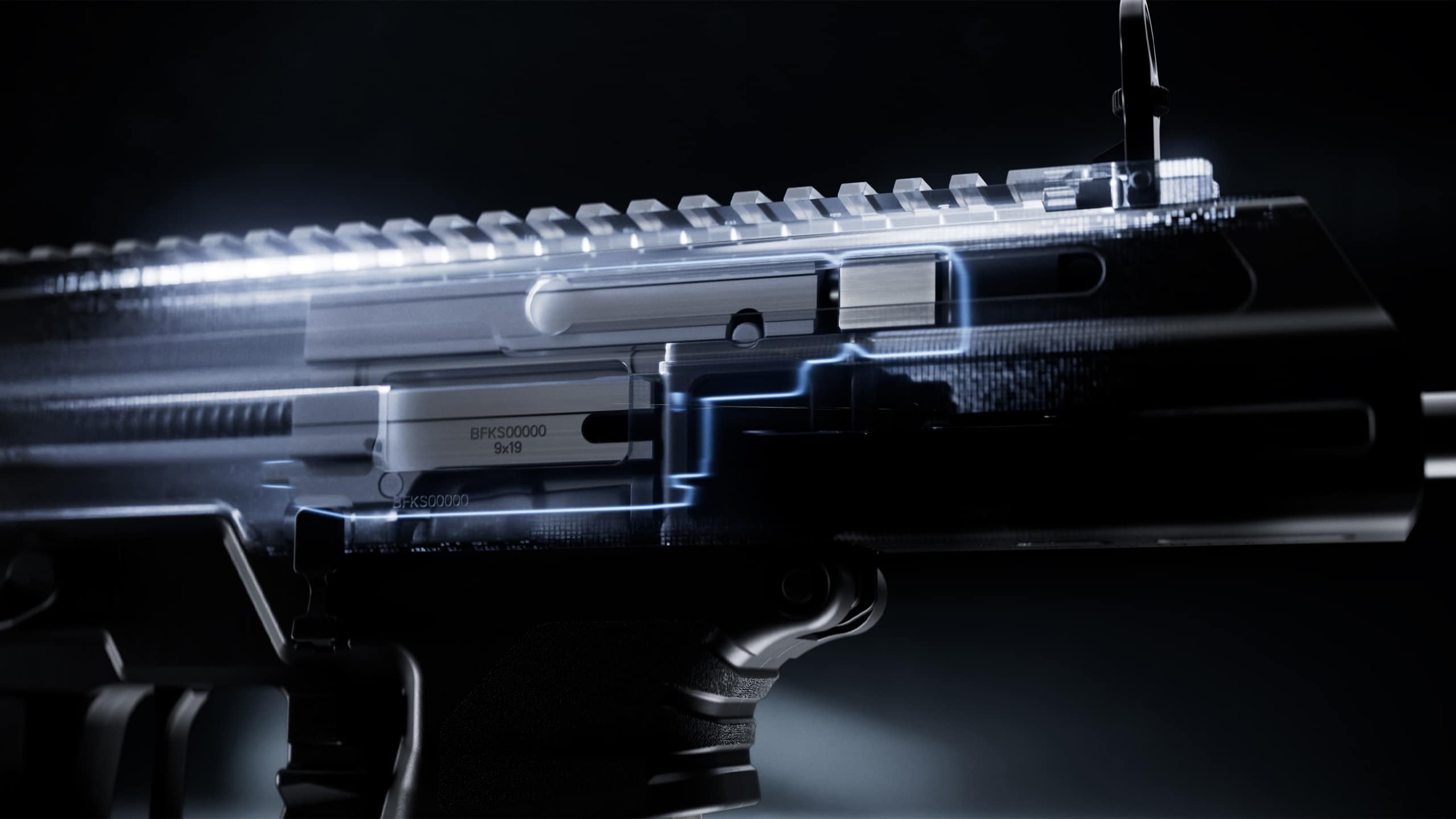
Everything in the universe is physics. Whether that is dropping a loaded PMAG onto your big toe, stepping on one of your kid’s Legos in the dark, punching a 5.56mm round through the ten ring, or the planetary attraction between the sun and earth, everything moves in response to universal physical laws. One of the most commonly well-known is Isaac Newton’s Third Law of Motion.
Distilled to its essence, Newton’s Third Law states that whenever one object exerts a force on a second object, the second object exerts an equal and opposite force on the first. No less a storied entity than NASA expounds to say that, “For every action (force) in nature there is an equal and opposite reaction. If object A exerts a force on object B, object B also exerts an equal and opposite force on object A. In other words, forces result from interactions.”
[Be sure to read Jeremy Tremp’s Springfield Kuna review.]
Curiously, Isaac Newton first posited his theories of gravitation in 1666 when he was only 23 years old. I wouldn’t trust most of today’s 23-year-olds unsupervised with a tape dispenser, yet this guy was churning out immutable physical laws like there was no tomorrow. Isaac Newton was clearly a pretty quick kid.

As it relates to firearms, that Third Law simply means that firing a projectile in one direction will invariably produce equivalent recoil in the opposite direction. We have engineered scads of different ways to take the edge off of that, but mass times acceleration in one direction will invariably equal mass times acceleration in the other direction — every single time.
Practicalities
9x19mm Parabellum is hands-down the most popular centerfire pistol cartridge on Planet Earth. Georg Luger’s timeless little bullets still serve to secure the vast majority of us well over a century after he first contrived the things. We shoot 9mm out of pistols, carbines, submachine guns, rifles and even revolvers. Most of the 9mm pistol-caliber carbines on the market today operate by means of an unlocked direct-blowback action.

There’s a solid reason for that. Little could be simpler. The combined horsepower of the mass of the unlocked bolt and its associated recoil spring is carefully balanced to counteract the force of the conflagrating 9mm round. However, don’t let that tiny little cartridge fool you. That thing is surprisingly spunky.
As a result, most of us are surprised the first time we fire a blowback-operated 9x19mm carbine. Recoil from such a firearm can be brisk. Additionally, the large mass required to keep the bolt in battery safely as firing pressures drop can cause the gun to wiggle a bit as it cycles back and forth.
Origin Story
Prior to World War II, the German military fielded the superlative MG 34 Einheitsmaschinengewehr, or “Universal Machine Gun.” At the time of its introduction, this amazing weapon was the finest light machine gun in the world.

However, it was a machinist’s nightmare. That made it both difficult and expensive to produce. The gun’s tight tolerances also left it susceptible to battlefield contaminants. By the late 1930s, the Nazis were actively searching for something better and cheaper. They found it in the revolutionary MG 42.
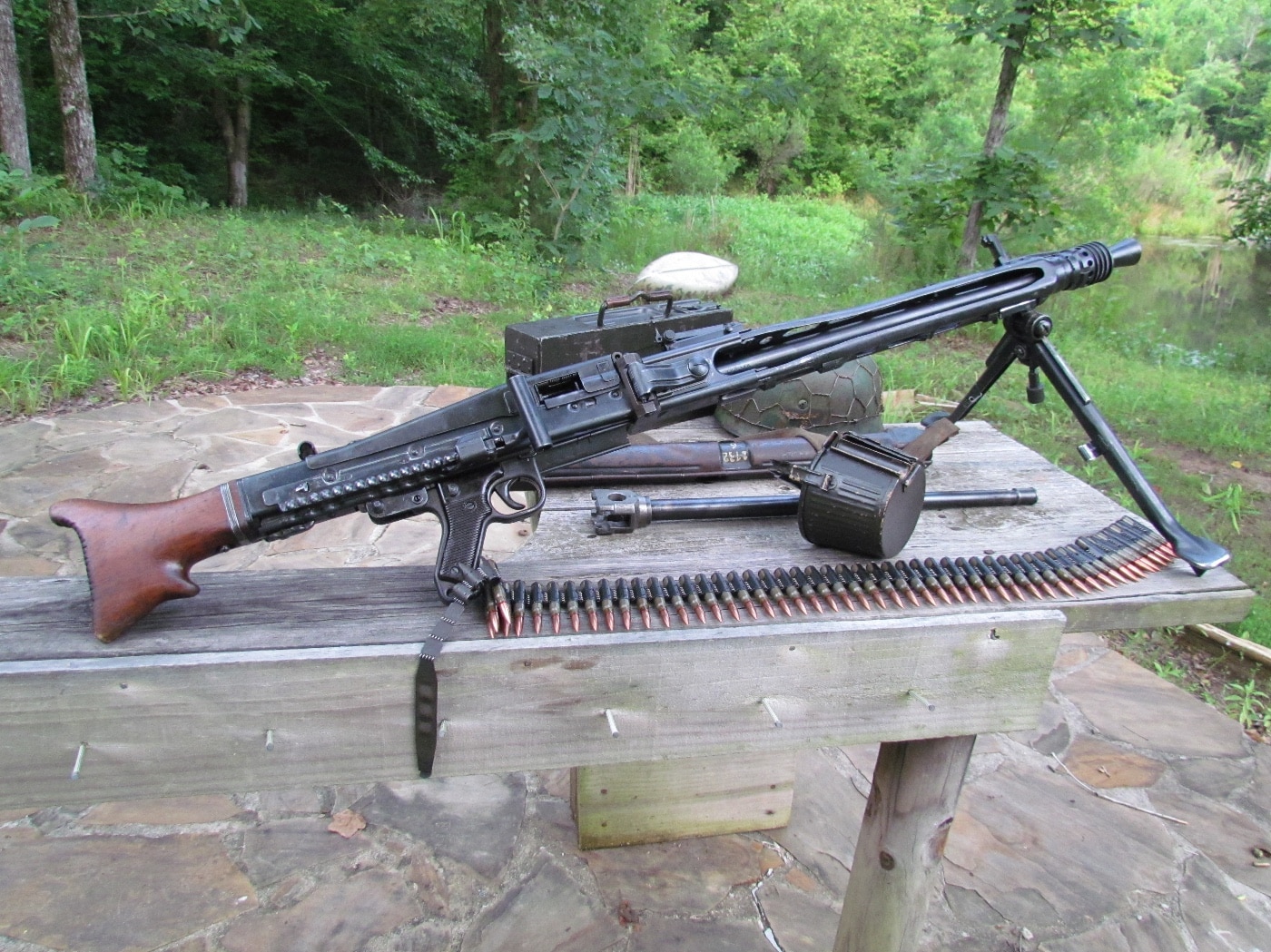
Metall und Lackierwarenfabrik Johannes Großfuß AG developed the winning design under the leadership of Dr. Werner Gruner. However, prior to this time, neither Gruner nor the people at his company had every produced a firearm. They made pressed steel railway lanterns. This natural dearth of preconceptions led them to approach the problem from a fresh uncorrupted perspective. Their novel solution changed the way the world made guns.

Instead of a more conventional gas-operated design, the MG 42 employed a unique roller-delayed action that was both reliable and inexpensive to produce. The basic concept has a pair of roller bearings mounted on the sides of the bolt assembly that cam into corresponding recesses milled into the breech face. This design is easy to produce with simple machine tools and fairly forgiving of dirt and grime. It also allows a much lighter bolt and carrier assembly than might be required for a more conventional blowback-operated gun.
Evolution in Action
The Germans were smitten with the gun, and rightfully so. The same basic MG 42 action soldiers on even today in the German Army’s MG 3 belt-fed machinegun. By 1945, the Germans were able to adapt the roller-delayed action into a magazine-fed combat rifle. The result was the StG 45.

The StG 45 fired 7.92x33mm Kurz via the same 30-round box magazines used by the StG 44 assault rifle. However, it did indeed operate via the novel roller-delayed blowback system now perfected in the MG 42. The StG 45 was just advancing past prototype stage at war’s end.

With Germany bombed into oblivion, the German engineers who designed the StG 45 took their drawings and relocated to Spain. There they developed the StG 45 action into the CETME rifle.

CETME stood for Centro de Estudios Técnicos de Materiales Especiales or “Centre for Technical Studies of Special Materials,” a Spanish government concern. The CETME rifle was ultimately chambered in 7.62mm NATO and went on to inspire a generation of roller-delayed guns in a wide variety of calibers.
Modern Treatment
The Springfield Armory Kuna propels the time-tested roller-delayed action into the Information Age. Built around a lightweight aluminum receiver, the Kuna features an indestructible polymer lower fire control group housing and completely ambidextrous controls. There is the expected safety and magazine release as well as a bilateral bolt catch as well. The charging handle is located up front for easy access and is readily reversible without tools.
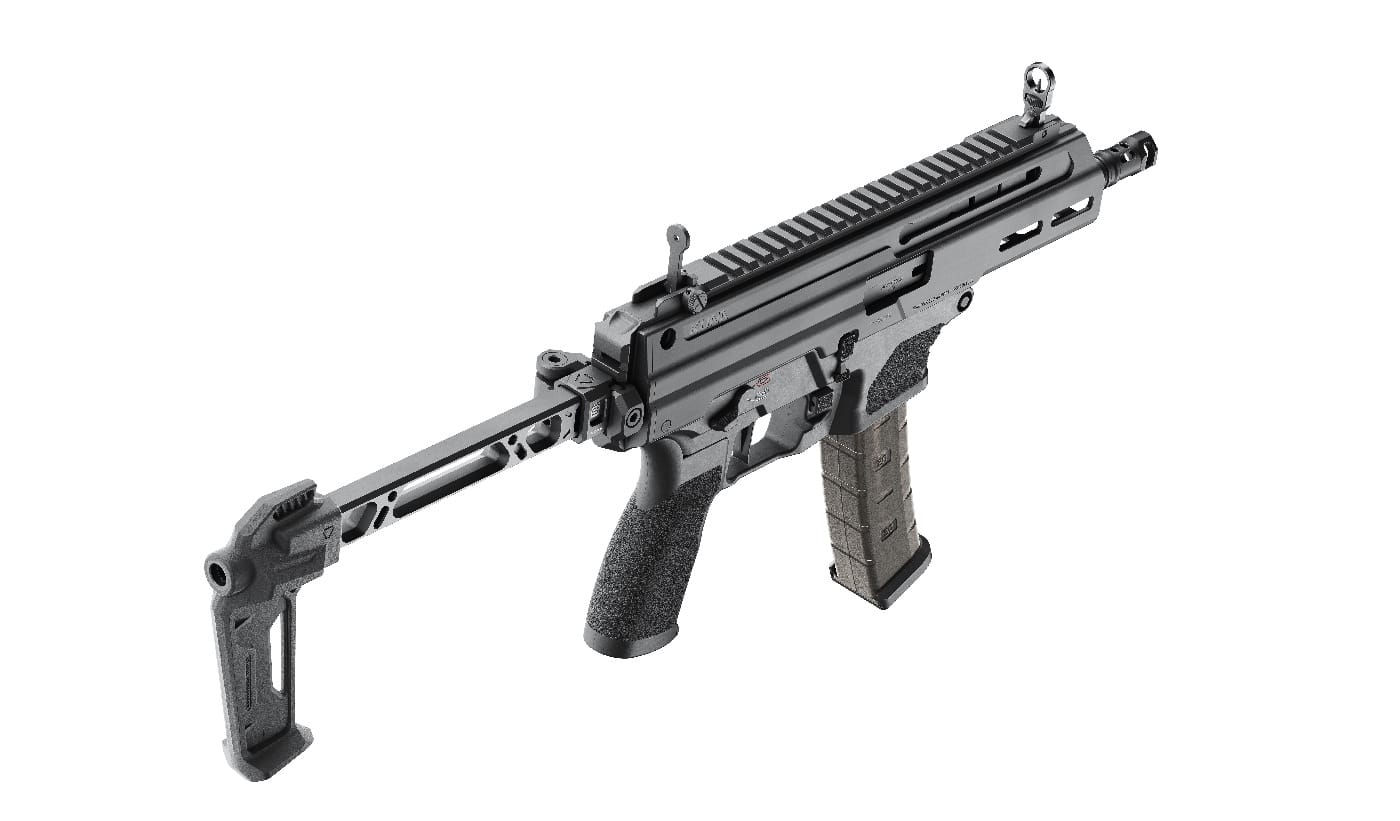
The Kuna comes with a superb set of two-position flip-up iron sights. It also feeds from proprietary but inexpensive 30-round polymer magazines. The front end sports ample M-Lok space for accessories, while the tail bit includes a Picatinny rail mount for pistol braces or buttstocks as the spirit leads.
Where the CETME featured a pair of side-mounted roller bearings, the Kuna just uses one located centrally and above the primary bolt carrier assembly. However, the basic concept is the same. Recoil from the fired round must overcome the resistance of the roller in its groove — rather than simply bolt mass and recoil spring weight.

Thanks to its roller-delayed blowback system, the Kuna offers the Newtonian theory-busting combination of light weight and low perceived recoil. It’s almost not fair how sweet-shooting this gun is. For home defense, competition or just pure unfiltered recreation, the lightweight, reliable Springfield Armory Kuna raises the bar on defensive firearms across the board.
I’ve squeezed more than my share of triggers, and that of the Kuna is truly world-class. I recently had opportunity to run the gun at a writer’s gig alongside some of the finest combat pistols in the industry. I could consistently ring steel with the conventional handguns so long as I paid attention to technique, sight picture and trigger control. By contrast, I was pummeling those targets with the Kuna all the way out to 100 meters.
Conclusion
The Kuna is a great gun no matter how you dissect it. The roller-delayed action is proven in combat, and the controls are legit perfect. Additionally, at four pounds ten ounces empty, the gun weighs less than its competitors by a fair margin.

Thanks to the creative application of Newtonian physics, the Kuna also shoots like an absolute dream. Sporting a starting MSRP of less than a grand, it’s also surprisingly affordable by Information Age standards. If you’re in the market for a new home defense or security gun, you need look no further.
Editor’s Note: Please be sure to check out The Armory Life Forum, where you can comment about our daily articles, as well as just talk guns and gear. Click the “Go To Forum Thread” link below to jump in and discuss this article and much more!


